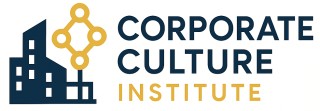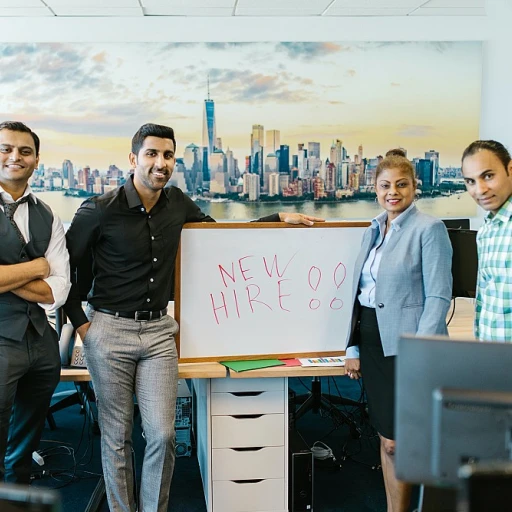
Understanding Company 2.0
The concept of Company 2.0 represents the transformation companies undergo in response to shifts in societal expectations, technological advancements, and global economic trends. This evolution in corporate culture has fundamentally changed how businesses operate, redefine roles, and foster a more inclusive and engaging work environment.
The Dawn of a New Corporate Era
Traditionally, companies were rigid entities with a clear top-down command structure. The development into Company 2.0 reflects a transition towards flexible, adaptive cultures prioritizing user experience and employee well-being. This transformation aligns with a more dynamic approach where services and products are constantly evolving to meet the changing demands of the market.
Today's companies aim to strike a balance between innovation and practicality, offering low-cost yet effective services. By shifting their focus, businesses can respond more effectively to increased pressure from the globalization of markets, mounting operational costs, and the need for continuous improvement.
A Holistic View of Modern Business Dynamics
In modern corporate culture, the emphasis is on an interconnected approach to managing company operations. Whether it be through real estate decisions, financial services management, or incorporating user feedback into product development, organizations strive to touch various aspects of business life while underpinning their core objectives.
Given the need to engage employees actively, cultivate their skills, and foster innovation within teams, Company 2.0 demands a more mindful engagement with people—be it employees, consumers, or the broader community. Companies now focus on developing roles that transcend traditional job descriptions, creating environments where skills can flourish and employees can thrive.
For those eager to delve deeper into navigating the complexities of Company 2.0, consider exploring deeper industry insights and contemporary management challenges by visiting Mastering Management Challenges in Corporate Culture.
The Role of Technology in Shaping Corporate Culture
The Influence of Digital Tools in Today's Corporate Dynamics
In the modern company landscape, technology has become a critical driver in shaping corporate culture. Its role transcends conventional business functions, permeating every layer of a company from services to leadership commands. This digital transformation aligns closely with changes in job structures and has heightened the need for companies to adapt quickly to new management challenges.
Digital tools, often likened to the unit of a machine gun in their impact, are continuously evolving. Artificial intelligence and machine learning have become instrumental in streamlining operations, reducing costs, and enhancing user experiences. Automation allows businesses to better allocate duty-bound resources and focus on achieving target goals with a refined precision previously compared to low-cost operations.
Moreover, these technological advancements are not just confined to a specific geographical location. The cultural shifts can be observed across different landscapes, from the bustling innovation hubs of San Francisco, California, to other regions in the United States. The aim is to create a cohesive, inclusive environment, ensuring every voice line is heard and valued, whether in terms of regular feedback or specialized service requests.
Companies striving to enhance employee engagement and well-being are increasingly adopting flexible work arrangements, remote working tools, and digital collaboration platforms. These technological services not only help maintain employee satisfaction but also ensure consistent and real-time communication, crucial to navigating the complexities of a modern work atmosphere.
In conclusion, technology acts as both a catalyst and a medium, transforming how companies view their internal strategies and external campaigns. It not only facilitates the demolition of outdated processes but also paves the way for innovative practices that reflect contemporary trends and expectations in corporate culture.
Leadership Styles for the Modern Era
Adaptive Leadership in Contemporary Business
In today’s Company 2.0 setting, leadership is not just about holding the top position; it's a dynamic duty that requires a keen sense of the evolving business environment and a deep understanding of how technology and human factors interplay. Leaders are expected to be more than just managers; they are the guiding force that fosters an atmosphere where innovation and engagement flourish. Here's how modern leadership styles are evolving:- Embracing Flexibility: Unlike the rigid command structures of the past, modern leadership involves flexibility. Leaders must adapt to the changing demands of the workforce and market conditions, similar to how financial services respond to fluctuating costs and market cycles. This adaptability helps in spearheading initiatives that align with the company’s vision, much like a well-orchestrated campaign.
- Technology-Driven Decisions: Leadership today leverages data analytics and AI to enhance decision-making. The integration of machine learning aids modern leaders in predicting market trends, akin to how a strategic unit analyzes an operation. By incorporating tools that provide an advanced user experience, leaders make more informed decisions that benefit the entire organization.
- Promoting Transparency: Creating a culture of transparency has increased importance. Modern leaders aim to build trust by openly communicating company objectives, ensuring that every employee understands their role and the impact of their work. This approach is akin to the clarity found in a well-drafted privacy policy.
- Inclusive Leadership Approach: The role of leadership now involves nurturing an inclusive environment that values diversity. Ensuring that every voice is heard — whether from employees in San Francisco or across the globe — is key to fostering an inclusive corporate culture that values every comment and idea.
Fostering Employee Engagement and Well-being
Enhancing Employee Experience
In the evolving landscape of Company 2.0, fostering employee engagement and well-being has become a pivotal focus. Companies are increasingly recognizing that their most valuable asset is their people. This shift in perspective is not just about improving job satisfaction but also about enhancing overall user experience within the workplace.
Creating a Supportive Environment
To achieve this, organizations are implementing a range of strategies aimed at creating a supportive environment. Regular feedback mechanisms, such as employee surveys and comment sessions, allow companies to understand the needs and views of their workforce. This approach not only helps in identifying areas for improvement but also empowers employees by giving them a voice in shaping their work environment.
Balancing Work and Well-being
Employee well-being is no longer a secondary concern. Companies are investing in services that promote physical and mental health, recognizing that a healthy workforce is more productive and engaged. Initiatives such as flexible working hours, wellness programs, and mental health support are becoming standard practices. These efforts are not just about reducing costs associated with absenteeism but also about fostering a culture of care and support.
Engagement Through Technology
Technology plays a crucial role in enhancing employee engagement. From virtual team-building activities to digital platforms that facilitate communication and collaboration, technology is a key enabler in creating a connected and engaged workforce. The use of technology also allows for more personalized experiences, catering to the unique needs and preferences of each employee.
Aligning with Organizational Goals
Ultimately, fostering employee engagement and well-being is about aligning individual goals with organizational objectives. By ensuring that employees feel valued and supported, companies can drive increased productivity and achieve their targets more effectively. This alignment not only benefits the company but also contributes to a more fulfilling and rewarding work experience for employees.
Diversity and Inclusion in Company 2.0
Sustaining Diversity as a Core Principle
Diversity and inclusion have transformed from mere buzzwords into essential components of a modern company's culture, especially as organizations shift towards more inclusive practices. Companies must prioritize creating environments where all employees feel valued, respected, and empowered regardless of their backgrounds.Integrating Inclusive Practices
- Promoting Representation: Ensure your workforce mirrors the diverse landscape of the market you're targeting. This may involve revising your recruitment processes across jobs and professional services to attract a wide range of candidates.
- Implementing Training Programs: Regular and mandatory diversity training can help sensitize employees to issues surrounding diversity. It's an air-tight measure to minimize biases and increase understanding within the unit.
- Encouraging Open Dialogue: Foster a culture where employees feel comfortable voicing their perspectives without fear, red flags, or blowback. Routine cultural surveys can provide people with a safe avenue to offer comment and feedback.
Benefits of an Inclusive Culture
Companies with strong diversity and inclusion frameworks often report improved job satisfaction and enhanced user experience. They also tend to have increased creativity and innovation as people from different backgrounds bring varied viewpoints. Moreover, a diverse workforce can fire up productivity levels and reduce employee turnover, ultimately leading to a decrease in cost related to recruitment and training.Challenges and Solutions
While the benefits are plentiful, companies may face challenges in achieving true diversity and inclusion. Common hurdles include resistance to change and a perceived increase in service demands.- Addressing Resistance: Transparent communication about the benefits of diversity programs can reduce reluctance. Leaders in financial services can lead regular campaigns that illustrate how diversity initiatives align with the company's core values and privacy policy.
- Balancing Cost: Though initial implementation costs may be heightened, the long-term benefits of an inclusive company will outweigh short-term expenses. The increased empathy and knowledge within the workforce result in better customer service and lower operational costs.
Measuring Success in a Company 2.0 Environment
Assessing Achievements and Progress
Understanding what success looks like in a Company 2.0 environment involves a comprehensive approach that considers both quantitative and qualitative factors. Companies need to examine various facets of their operations, from employee engagement to customer satisfaction, to get a holistic view of their achievements.- Employee Engagement and Well-being: Regular surveys and feedback loops are essential in capturing the pulse of employees. These activities can be augmented by using voice lines and other communication tools to ensure employees feel heard and valued. Keeping a close watch on employee well-being and offering services that support mental health can significantly boost productivity and morale.
- Technological Integration: The role of technology in modern corporate culture is immense. Using advanced metrics to evaluate user experience, bug fixes, and services offered can highlight efficiency areas. Organizations should strive to ensure that technology integration aligns with their core missions and goals.
- Leadership Impact: Leaders play a pivotal role in shaping corporate culture. Tracking their impact on team dynamics and overall company trajectory through KPIs can provide valuable insights. A fair and transparent duty of command and responsibility over units will boost the trust and morale of the workforce.
- Diversity and Inclusion Metrics: Organizations must develop specific metrics to assess their diversity and inclusion efforts. By examining hiring trends and retention rates, as well as considering the employee perspectives through comments and feedback, companies can refine their strategies.
- Market Position and Financial Outcomes: Companies often assess their market positions using financial services metrics and cost evaluations. Engaging in campaigns that reflect the company's values can also influence public perceptions, as seen in the low cost options and added value services that target specific customer segments.
- Community and Environmental Impact: Finally, measuring the organization's impact on the community and environment is crucial. Companies in San Francisco, and across the United States, must balance economic activities while respecting local regulations and cultural expectations, reflecting their commitment to sustainable practices.













